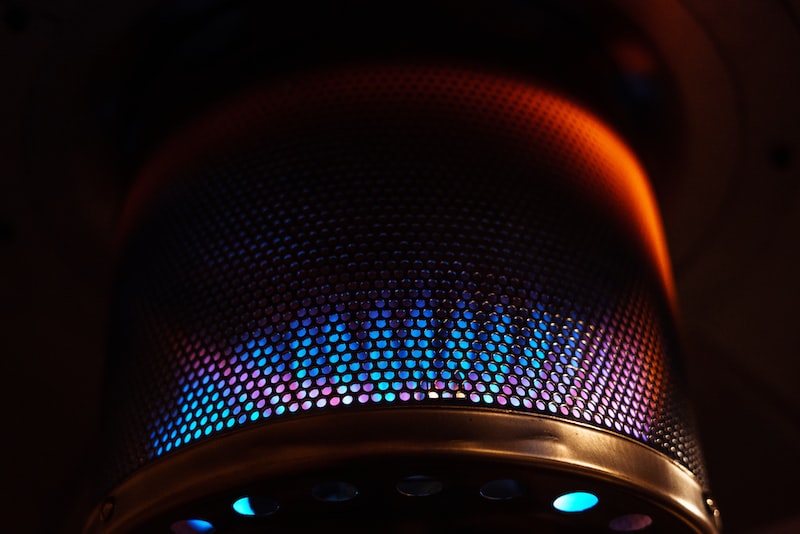Table of Contents
Have you ever shared a post on Facebook and received reactions that you weren’t exactly thrilled about? Maybe you posted something personal, and the flood of angry or sad emojis didn’t sit well with you. Well, here’s some good news for Facebook users: you can now hide those reactions from your posts. Let’s dive into the details of this handy feature.
Facebook has introduced a new option that allows users to control who can see the reactions on their posts. This feature gives you the freedom to decide whether you want to display the reactions publicly or restrict them to yourself only. It grants you the power to maintain a certain level of privacy and discretion over your social media presence.
To make use of this feature, simply go to the post where you want to hide the reactions. Tap on the three dots in the upper right corner of the post and select “Edit Privacy.” From there, you can choose between “Public,” “Friends,” or “Only Me” to determine who can view the reactions. By selecting “Only Me,” you ensure that the reactions remain hidden from everyone except yourself.
This newfound control over reactions on Facebook opens up a world of possibilities. You no longer have to worry about negative or unfavorable reactions tarnishing your posts. It enables you to curate the perception of your content, maintaining a positive and inviting atmosphere for your friends and followers.
Think of it as a virtual shield, offering you protection from the potential impact of unwanted reactions. Just like wearing sunglasses shields your eyes from the bright sun, hiding Facebook reactions shields your online presence from unnecessary negativity. It gives you the freedom to express yourself without constantly worrying about how others will react.
the ability to hide Facebook reactions is a valuable tool for users who seek more control over their social media experiences. With just a few clicks, you can shield your posts from unwanted emotions and maintain a positive online environment. So, go ahead and experiment with this feature to enhance your social media discretion. Your virtual sanctuary awaits!
The Power of Discretion: How Facebook’s Hidden Reactions are Changing the Social Media Landscape
The social media landscape is constantly
evolving, and Facebook is at the forefront of these changes. One feature that has caught the attention of users is Facebook’s hidden reactions. These discreet yet powerful expressions have revolutionized the way we interact and communicate on the platform.When Facebook introduced the “Like” button years ago, it quickly became a ubiquitous symbol of approval. However, not all posts or comments warrant a simple thumbs-up. People wanted a more nuanced way to express their feelings, and that’s where hidden reactions come into play.
With hidden reactions, Facebook users can now choose from a range of emotional responses beyond just liking a post. By long-pressing or hovering over the “Like” button, a menu of additional reactions unfolds, offering options such as Love, Haha, Wow, Sad, and Angry. These hidden reactions provide a richer and more complex way to engage with content, allowing users to express empathy, amusement, surprise, sadness, or even discontent.
The power of discretion lies in the ability to convey genuine sentiments without necessarily drawing attention to oneself. It allows users to respond authentically to content they come across, without feeling compelled to publicly announce every emotion they experience. This added layer of privacy and subtlety fosters more meaningful interactions and encourages users to engage with a wider range of content.
Hidden reactions also hold immense potential for marketers and businesses. By analyzing the hidden reactions received on their posts, brands can gain valuable insights into how their audience truly feels about their products, services, or campaigns. This data can inform future marketing strategies and help businesses tailor their content to better resonate with their target audience.

Facebook’s hidden reactions have changed the social media landscape by providing users with a more nuanced and authentic way to interact. The power of discretion allows individuals to express themselves genuinely while maintaining a sense of privacy. Moreover, businesses can leverage these hidden reactions to gain valuable insights and improve their marketing efforts. So, the next time you come across a post on Facebook that elicits a complex emotion, take a moment to explore the hidden reactions and let your true feelings be known.
Behind the Mask: Unveiling the Secrets of Facebook’s Hidden Reaction Feature
Have you ever wondered what lies behind the mask of Facebook’s hidden reaction feature? It’s like a secret world hidden in plain sight, waiting to be discovered. In this article, we will delve into the depths of this intriguing feature and unveil its secrets.
When you scroll through your Facebook feed, you may have noticed more than just the standard “Like” button. There are other reactions like “Love,” “Haha,” “Wow,” “Sad,” and “Angry.” But did you know that there is a whole range of hidden reactions lurking beneath the surface?
To unlock these hidden reactions, all you need to do is hold down the “Like” button on the Facebook mobile app or hover over it on the desktop version. A whole new spectrum of emotions will appear before your eyes, from “Care” and “Celebrate” to “Support” and “Greet.” These hidden reactions allow users to express themselves in a more nuanced and diverse way.
Facebook introduced these hidden reactions as a way to provide users with additional options for expressing their feelings. It goes beyond the simple act of liking a post by allowing people to show empathy, solidarity, and joy. Whether you want to send virtual hugs or cheer someone on, these hidden reactions add depth to our online interactions.
But why keep these reactions hidden in the first place? Well, Facebook wanted to strike a balance between simplicity and variety. By keeping the initial set of reactions limited, they ensured that the user experience remained straightforward and intuitive. The hidden reactions offer an extra layer of complexity for those who seek it, while still maintaining the platform’s accessibility for everyone.
Next time you come across a heartwarming story or a funny video, take a moment to explore the hidden reactions. Let your emotions flow freely and choose the one that resonates with you the most. Engage in a conversation without saying a word, simply by selecting the perfect reaction.
Facebook’s hidden reaction feature is like a treasure trove waiting to be discovered. It adds depth, variety, and nuance to our online interactions, allowing us to express ourselves in ways beyond a simple “Like.” So go ahead, unveil the secrets behind the mask and let your reactions speak volumes.
Social Media Etiquette 2.0: Exploring the Growing Trend of Hiding Facebook Reactions
Have you noticed a change in the way people interact on Facebook lately? It seems that a new trend is emerging, where users are choosing to hide their reactions to posts. In this article, we delve into the evolving world of social media etiquette and take a closer look at the reasons behind the growing popularity of hiding Facebook reactions.
In the past, Facebook users had limited options when it came to expressing their feelings about a post. They could either like it, love it, show sadness or anger, or leave a comment. However, with the introduction of the “hide reactions” feature, individuals now have the ability to keep their emotions private. This shift marks a significant departure from the previous norm of public display of engagement.

So, why are more and more Facebook users opting to hide their reactions? One reason could be the desire for privacy. With the increasing scrutiny of online activities, people are becoming more cautious about what they reveal publicly. By concealing their reactions, users can maintain a level of personal confidentiality while still engaging with others’ posts.
Another factor contributing to this trend is the fear of judgment. Social media has become a platform where people’s lives are constantly on display, inviting both positive and negative feedback. Hiding reactions allows individuals to avoid potential criticism or unwanted attention. It provides a sense of control over one’s online presence and protects against the vulnerability that comes with openly expressing oneself.

Moreover, hiding reactions can foster more meaningful conversations. When reactions are concealed, the focus shifts from seeking validation through likes to fostering genuine interactions. This encourages users to engage with posts based on their true thoughts and opinions, rather than simply following the crowd. It opens up opportunities for constructive dialogue and diverse perspectives, enhancing the overall quality of social media interactions.
the growing trend of hiding Facebook reactions reflects an evolution in social media etiquette. Users are prioritizing privacy, seeking to avoid judgment, and fostering more meaningful conversations. As the online landscape continues to evolve, it is essential for individuals to navigate these changes and adapt their behavior accordingly. So, the next time you come across a post on Facebook, remember that there may be more to it than meets the eye.
Curiosity Unleashed: Why Are People Choosing to Conceal Their Facebook Reactions?
Have you ever noticed the recent trend of people hiding their Facebook reactions? It’s a curious phenomenon that has caught the attention of many users. In this article, we will explore the reasons behind this growing trend and unravel the motivations behind concealing these online expressions.
In the realm of social media, Facebook reactions have become an integral part of our digital interactions. They allow us to express our emotions and opinions with just a click or tap. From the familiar “Like” to the array of emojis representing love, laughter, surprise, sadness, and anger, these reactions have added depth and nuance to our online conversations.

So, why then are more and more individuals opting to conceal their Facebook reactions? One possible explanation is the desire for privacy. With the increasing awareness of data security and personal information protection, people are becoming cautious about what they share publicly. By concealing their reactions, users can maintain a level of anonymity and keep their preferences hidden from prying eyes.
Furthermore, concealing reactions can also be a strategic move. In today’s hyper-connected world, our online presence often extends beyond our immediate circle of friends. Employers, colleagues, and potential clients can easily stumble upon our social media profiles. By keeping their reactions concealed, individuals can exercise control over how they are perceived and prevent any misinterpretation of their true feelings or thoughts.
Another noteworthy reason for hiding Facebook reactions is the avoidance of social pressure. We all experience moments when our genuine opinion might differ from the majority. By concealing their reactions, individuals can refrain from engaging in debates or confrontations, maintaining harmony within their social networks. This allows for a more peaceful coexistence, as people choose not to engage in potentially contentious discussions.
the decision to conceal Facebook reactions stems from a combination of factors such as privacy concerns, strategic considerations, and the desire to avoid social pressure. Whether it’s to protect personal information, manage professional reputations, or simply maintain a peaceful online environment, this trend reflects the evolving dynamics of our digital interactions. So, the next time you encounter a hidden reaction on Facebook, remember that there’s more beneath the surface than meets the eye.





